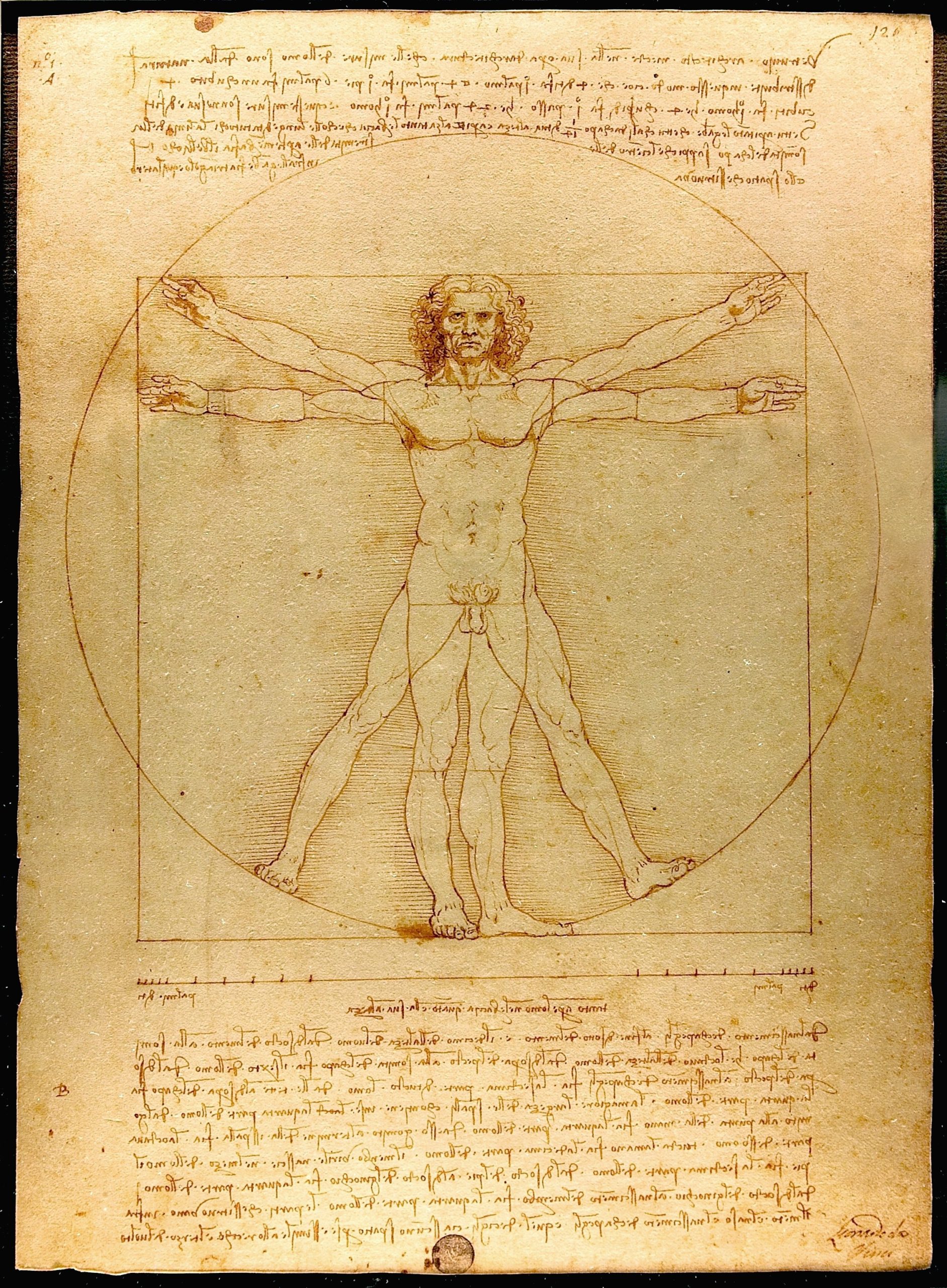Introduction
To help you become familiar with making measurements and estimating the associated uncertainties, we will begin with an experiment made up of relatively simple individual measurements. There will also be a chance to practice writing a hypothesis, simple uncertainty propagation, and finding a trend in data.

Figure 1: Photograph of the Vitruvian Man drawing by Leonardo da Vinci showing idealized proportions of the human body. These proportions will provide the theoretical expectations tested in this experiment.
The Vitruvian Man drawing by Leonardo da Vinci depicts a man with outstretched arms, inscribed in a square and a circle (see Figure 1). da Vinci was inspired by the work of the Roman architect Vitruvius Pollo. In his book Ten Books on Architecture, Pollo outlined a number of rules concerning the proportions of the human body [1], and da Vinci followed these rules in his drawing [2]. These proportions are laid out in the passage:
For the human body is so designed by nature that the face, from the chin to the top of the forehead and the lowest roots of the hair, is a tenth part of the whole height; the open hand from the wrist to the tip of the middle finger is just the same; the head from the chin to the crown is an eighth, and with the neck and shoulder from the top of the breast to the lowest roots of the hair is a sixth; from the middle of the breast to the summit of the crown is a fourth. If we take the height of the face itself, the distance from the bottom of the chin to the underside of the nostrils is one third of it; the nose from the underside of the nostrils to a line between the eyebrows is the same; from there to the lowest roots of the hair is also a third, comprising the forehead. The length of the foot is one sixth of the height of the body; of the forearm, one fourth; and the breadth of the breast is also one fourth. The other members, too, have their own symmetrical proportions, and it was by employing them that the famous painters and sculptors of antiquity attained to great and endless renown [1].
You will be experimentally testing the relation between the length of peoples’ feet and their height. Then you will use your result to predict the height of an individual from a measurement of their foot length.
Bear in mind that you are doing an experiment, which is a powerful tool of testing theoretical ideas. Therefore, if you do the measurements and analysis with care, you should have an open mind about your experimental findings, and whether they support or refute the hypothesis. Just note that only because your results don’t support this strict model, it doesn’t necessarily mean they are not good enough. You will have the chance to see for yourself if this is a good model or not, and think about what your limitations in this particular experiment may be. But first, let’s put our hypothesis together.
Question 1
What is the hypothesis (prediction) you will test with your experiment, regarding the relation between foot length and height? (Use the relation from the above quoted paragraph). Make sure to include a mathematical expression for the relation and explain what any variables represent. Also, be sure to reference where this mathematical expression comes from.
If you’re unsure, feel free to explain what you have to a TA and they can help you.
1.25 marks
